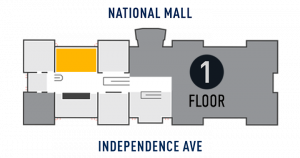Turbojet Model Pratt & Whitney JT3C (J57)
Pratt & whitney developed the 4,500-kilogram (10,000-pound) thrust JT3 turbojet engine in 1950. It powered such military aircraft as the Boeing B-52, Convair F-102, Douglas A3D, Lockheed U-2, McDonnell F-101, and North American F-100, and a majority of Boeing 707 and Douglas DC-8 transports. The prototype Boeing 707 (367-80), now in the collection of the National Air and Space Museum, was powered by the JT3 engine.
When modified to the JT3D turbofan configuration, this engine powered the same transports with greater fuel efficiency, more thrust, and less noise. The modification included replacing the first three compressor stages with two fan stages, which extend beyond the compressor casing and act like propellers. The resulting increase in air flow is beneficial at speeds between 560 and 1,045 kilometers (350 to 650 miles) per hour.
This object is on display in America by Air at the National Air and Space Museum in Washington, DC.

Overall: 86.4 × 24.6cm, 176kg (2 ft. 10 in. × 9 11/16 in., 388lb.)
Aluminum
Plastic
Paint
Ferrous Alloy
Ink
For more information, visit the Smithsonians Terms of Use.